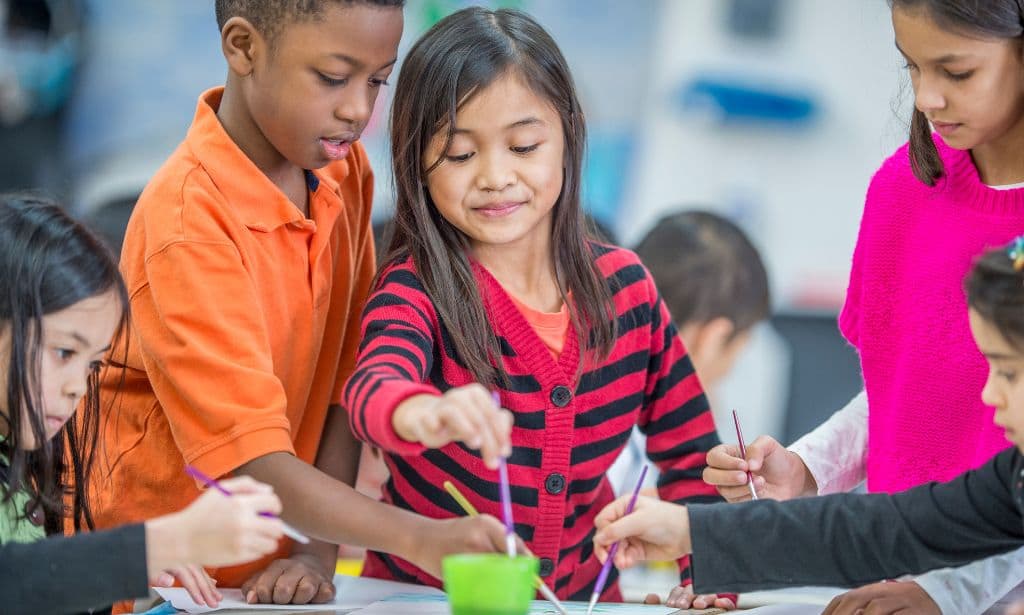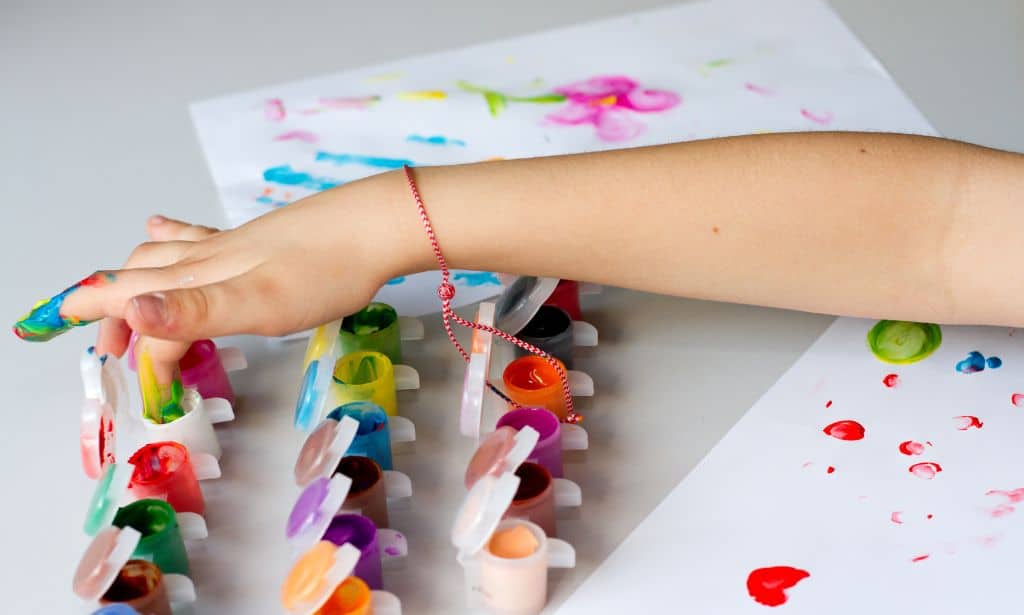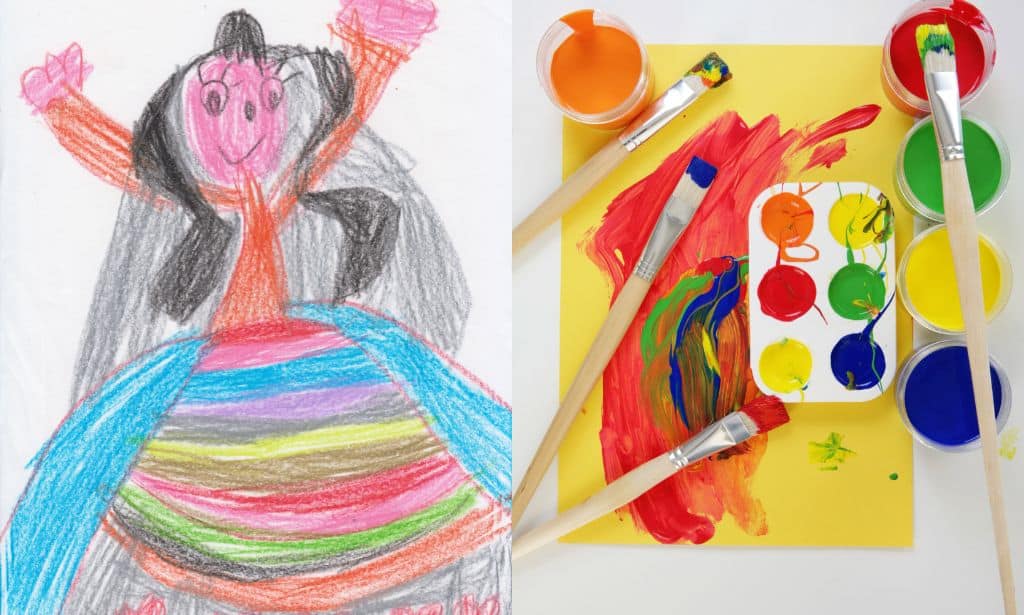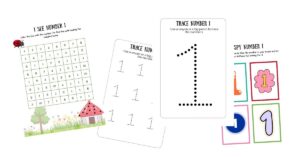Do your kids prefer drawing over painting, and vice versa? Or are they bombarding you with questions about these two art forms? Don’t fret; we’re here to simplify the answers. For starters, drawing and painting are completely different.
Drawing focuses on creating shapes and contrasts using dry media, such as pencils, chalk, charcoal, and ink. On the other hand, painting focuses on texture and defining contrast, using wet media like oil paint, acrylic paint, and watercolor.
But first, let’s explore the definitions.
What Is Drawing?
Drawing is a visual art form that creates images or outlines on paper using pencils, crayons, ink, and soft pastels. Drawings are usually defined by lines, shades, and shapes that connect the full picture. Generally, many people regard drawing as the most basic art form, but the intricate details and techniques prove that it is also a superior art form.

Types of Drawing Techniques
- Emotive drawing
- Perspective drawing
- Line drawing
- Analytical drawing
- Doodling
- Architectural drawing
- Photorealism
- Gesture drawing
- Caricature drawing
- Cartoon drawing

What Is Painting?
Painting is a visual art form that creates images and designs through color application. Painters apply wet media like oil paint and watercolor on specialized paper or canvas. What’s more, painting encourages expression through color mixing to create unique textures and aesthetics.
Types of Painting Techniques
- Oil painting
- Acrylic painting
- Watercolor painting
- Digital painting
- Pastel painting
- Landscape painting
- Drybrushing
- Ink wash painting
6 Differences between Drawing and Painting
1. The Definitions are Different
Although painting and drawing are visual art forms, the definitions are completely different. Drawing involves using dry media to create images on paper, cardboard, and other solid surfaces. On the other hand, painting is a form of art that relies on wet media and incorporates a lot of colors to achieve the final product.
The types of drawing and painting techniques also differ greatly and require varying skill levels for perfect execution. Lastly, people who draw are known as artists, whereas those that paint are referred to as painters. However, both parties fall under the category of visual artists.
2. They Focus on Different Details
Details define practical art, and painting and drawing focus on different details. For starters, painters prioritize color pigments and forms that define shapes and edges. Creating beautiful contrasts and textures is important for painters because it guides the viewer’s eye and sparks curiosity.
In drawings, the focus is mainly on the lines and shapes. The artist will guide the viewer’s eye by adding straight, curved, thick, thin, or wavy lines. Moreover, artists will spend hours shading their drawings to create a three-dimensional image or the illusion of space.
3. They Use Different Tools and Mediums
Painters use oil paint, acrylic paint, gouache, watercolors, mixing palettes, paintbrushes, canvas paper, and pallet paper. On the other hand, artists will use different types of pencils, crayons, erasers, rulers, drawing paper, charcoal sticks, and wax color pencils.
The tools and mediums are different because each art form focuses on unique details, and the base surface differs. While we’re on the topic of tools and mediums, take some time to read my article about the best pencil types for drawing and sketching. Remember, your tools of the trade are crucial in art.

4. Alterations are Easier for Drawings than Paintings
Mistakes are part of any artistic process, and it’s common for visual artists to re-do their work several times. But, of course, it’s easier for artists because you can easily erase a pencil mistake. For example, if you draw a crooked, you don’t have to replace the full image because an eraser will do the trick.
But painters aren’t as lucky. It is very challenging to make alterations to a painting because you’re using wet media on specialized paper. Usually, skilled painters use a paintbrush or a small piece of cotton to cover the mistake. If it’s a big mess up, you’ll have to rework your entire piece, which is time-consuming.
5. Paintings Require a Palette; Drawings Don’t
As mentioned earlier, painting incorporates a lot of colors. Therefore, a mixing palette is handy when mixing colors and creating beautiful shades. In short, a color palette is essential for a painter.
Artists don’t need palettes because they don’t use color. And when they do incorporate color, it’s never liquid paint. In fact, most drawings will only feature one color, limiting the need for color mixing.
6. Paintings are More Valuable
Based on historical patterns, paintings are more valuable than drawings. Generally, paintings that are done on canvas and other specialized boards will rank higher on the market. For example, the Mona Lisa by Leonardo da Vinci is the world’s most expensive painting.
What’s more, the painting’s base is not paper; Da Vinci used a panel of poplar. Apart from the base surface, paintings are more valuable because the tools and mediums are expensive. Painters require more materials and will spend more compared to artists.
But don’t be fooled; drawings can cost a pretty penny too. For example, a sketch by Italian artist Raphael sold for $47 million at an auction.

Which Is Better, Drawing or Painting?
Generally speaking, no art form is superior to the other. For example, drawing focuses on lines and shades, whereas painting brings color and texture to images. What’s more, both art forms require a tremendous skill level, resulting in incredible masterpieces.
Which Is Harder, Drawing or Painting?
Painting is harder than drawing. However, both arts require skill and consistent practice. Also, you’ll notice that kids learn how to draw before their teachers introduce painting activities. With painting, you must be creative and understand the proper use of tools and mediums.
Drawing requires attention to detail, but it is easier to grasp the basics of perspective. We encourage you to read our extensive article explaining how well kids should draw, depending on their age. Take a look!
Do I Need to Learn Drawing Before I Paint?
You don’t have to be a skilled artist to excel as a painter. Drawing skills are optional if you can play with color and creatively use a paintbrush to create abstract art. However, figurative painting requires drawing experience for the painting’s foundation. Also, some painters choose to perfect their drawing skills as a creativity boost.
In conclusion, drawing and painting vary in execution, tools, and points of focus. However, whether your child takes up drawing or painting, please encourage them to develop their skills passionately. Who knows? They might be the next Raphael or Leonardo da Vinci. In fact, read our article on gifts for kids who love to draw for encouragement ideas.




